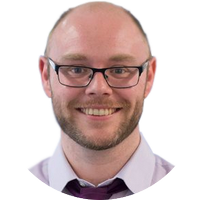Revealed: the most expensive streets in the UK in 2023
Study highlights the streets where you may have to pay an average of £20 million in order to purchase a house in 2023.


Grosvenor Square in Mayfair has been named the most expensive street in which to buy a home in the UK, Halifax research shows.
House prices may have declined on average over the last year, but the cost of buying a home has increased for many as a result of the sharp jumps in mortgage rates.
That is only exacerbated if you happen to buy a home in one of the costliest areas of the country. So which are the most expensive streets for homebuyers?
MoneyWeek
Subscribe to MoneyWeek today and get your first six magazine issues absolutely FREE

Sign up to Money Morning
Don't miss the latest investment and personal finances news, market analysis, plus money-saving tips with our free twice-daily newsletter
Don't miss the latest investment and personal finances news, market analysis, plus money-saving tips with our free twice-daily newsletter
The most expensive streets to buy a home
The Halifax study dug into average house prices for individual streets, using typical prices over the last five years.
Perhaps unsurprisingly, each spot in the top 10 is taken up by streets located in the west or south west of London. Here are the streets which have seen the most consistently high average prices dating back to 2018.
| Street | Location | Postcode | Average house price (2018-2023) |
|---|---|---|---|
| Grosvenor Square | London | W1K | £20,347,000 |
| Clarendon Road | London | W11 | £19,963,000 |
| Knightsbridge | London | SW1X | £19,949,000 |
| Phillimore Gardens | London | W8 | £19,113,000 |
| Ilchester Place | London | W14 | £17,678,000 |
| Grosvenor Crescent | London | SW1X | £16,397,000 |
| Ashburton Place | London | W1J | £15,048,000 |
| The Little Boltons | London | SW10 | £14,925,000 |
| Chepstow Villas | London | W11 | £14,775,000 |
| Chelsea Square | London | SW3 | £14,666,000 |
Grosvenor Square not only sits in the heart of Mayfair, but also has a rich history dating back to the early 18th century. That combination is clearly in demand among the wealthiest, driving up house prices past the £20 million threshold.
It’s followed by Clarendon Road, in trendy Notting Hill, and Knightsbridge which of course plays home to Harrods.
The most expensive streets outside of London
When you get out of the capital however, you find there are some significant regional variances in terms of the most expensive streets.
The most expensive is found in the South East, where a home on the East Road in Weybridge will set you back a whopping £9,010,000 on average.
In the North West, the most expensive street is Old Hall Road in Windermere. A home on this road will cost a typical £4,015,000. That’s £500,000 more than the road in second place, Withinlee Road in Macclesfield.
The South West is the next most expensive destination, with Poole in Dorset dominating ‒ five of the 10 most expensive streets in the region are found within the town. The most costly of all is Lawrence Drive, where homes cost an average of £3,991,000.
In the East of England, the top seven streets will all mean spending an average of above £3 million. Top of the list is Woodlands Road in Cambridge, with an average house price of £3,832,000.
If you fancy living in the most expensive street in Yorkshire and the Humber, then you will need to pay £2,320,000 on average for a home on Manor House Lane in Leeds, while in the West Midlands you’ll need to pay a little over £2 million for a property on Wellesbourne Road in Stratford upon Avon.
According to Halifax, Croft Road in Nottingham is the costliest street in the East Midlands, and will set you back £1,694,000, while Ramdales Park in Durham is the most expensive street in the North East for the second year in a row, with average prices of £1,536,000.
Finally in Wales, you will need to pay £1,345,000 on average for a home on Benar Headland in Pwllheli.
What next for house prices?
It has been a difficult 12 months for house prices generally, with most house price indices reporting drops in average values on an annual basis.
Rising mortgage costs, coupled with the persistently high rate of inflation, have dented demand levels from potential buyers and that has led to house price falls.
Zoopla found that vendors are currently having to accept an average of £18,000 of the asking price in order to secure a sale.
However, recent indices from Halifax and Nationwide have reported month-on-month increases in average house prices, suggesting that the market may have turned a corner. With mortgage rates already falling from their peak earlier this year, there is speculation that house prices will once again start rising next year.
Get the latest financial news, insights and expert analysis from our award-winning MoneyWeek team, to help you understand what really matters when it comes to your finances.
John Fitzsimons has been writing about finance since 2007, and is a former editor of Mortgage Solutions and loveMONEY. Since going freelance in 2016 he has written for publications including The Sunday Times, The Mirror, The Sun, The Daily Mail and Forbes, and is committed to helping readers make more informed decisions about their money.
-
 The shape of yields to come
The shape of yields to comeCentral banks are likely to buy up short-term bonds to keep debt costs down for governments
-
 The sad decline of investment clubs – and what comes next
The sad decline of investment clubs – and what comes nextOpinion Financial regulation and rising costs are killing off investment clubs that once used to be an enjoyable hobby, says David Prosser
